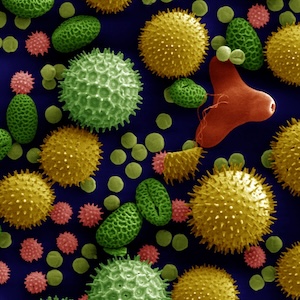Local allergic rhinitis: considerations
Keywords:
local allergic rhinitis, rhinitis, naso-sinus pathologiesAbstract
The term "local allergic rhinitis" has gained popularity as a clinical entity in recent years. Despite the apparent contradiction in the definitions of "nasal" and "local," we offer insights based on our extensive experience in the field. Local allergic rhinitis has been recognized and treated for many years, so it is not a new discovery. The nasal provocation test, which was introduced in the 1980s, was critical in identifying allergic rhinitis cases with suggestive symptoms but negative allergy tests. Our reflections aim to contribute to a precise terminological decision that is consistent with various points of view.
References
Rondon C, Fernandez J, Lopez S, Campo P, Dona J, Torres MJ, et al. Nasal inflammatory mediators and specific IgE production after nasal challenge with grass pollen in local allergic rhinitis J Allergy Clin Immunol 2009;124:1005-11.e1.
Rondón C, Campo P, Galindo L, Blanca-López N, Cassinello MS, Rodriguez-Bada JL, et al. Prevalence and clinical relevance of local allergic rhinitis. Allergy 2012;67:1282-8.
Passali D. Screening of allergic rhinitis. Rhinology 1983;21:321-8.
Rondon C, Campo P, Zambonino MA, Blanca-Lopez N, Torres MJ, Melendez L, et al. Follow-up study in local allergic rhinitis shows a consistent entity not evolving to systemic allergic rhinitis. J Allergy Clin Immunol 2014;133:1026-31.
Testera-Montes A, Salas M, Palomares F, Ariza A, Torres MJ, Rondón C, et al. Local respiratory allergy: from rhinitis phenotype to disease spectrum. Front Immunol 2021;12:691964.
Bellussi L, Marcucci F, Sensi LG, Passali GC, Lauriello M, Passali FM, et al. Do tryptase, ECP and specific IgE measurement by nasal incubation increase the specific nasal provocation test sensitivity? Int J Immunopathol Pharmacol 2004;17:201-8.
Dold S, Wjst M, von Mutius E, Reitmeir P, Stiepel E. Genetic risk for asthma, allergic rhinitis and atopic dermatitis Arch Dis Child.1992;67:1018-22.
Zhang N, Van Crombruggen K, Gevaert E, Bachert C. Barrier function of the nasal mucosa in health and type-2 biased airway diseases. Allergy 2016;71:295-307.
Dimitri-Pinheiro S, Soares R, Barata P. The microbiome of the nose-friend or foe? Allergy Rhinol (Providence) 2020;11:2152656720911605.
Yuan Y, Wang C, Wang G, Guo X, Jiang S, Zuo X, et al. Airway microbiome and serum metabolomics analysis identify differential candidate biomarkers in allergic rhinitis. Front Immunol 2022;12:771136.
Hoggard M, Biswas K, Zoing M, Wagner Mackenzie B, Taylor MW, Douglas RG. Evidence of microbiota dysbiosis in chronic rhinosinusitis. Int Forum Allergy Rhinol 2017;7:230-9.
Eckrich J, Hinkel J, Fischl A, Herrmann E, Holtappels G, Bachert C, et al. Nasal IgE in subjects with allergic and nonallergic rhinitis. World Allergy Organ J 2020;13:100129.

Published
Issue
Section
License
Copyright (c) 2023 The Author(s)

This work is licensed under a Creative Commons Attribution-NonCommercial 4.0 International License.
Mattioli 1885 has chosen to apply the Creative Commons Attribution NonCommercial 4.0 International License (CC BY-NC 4.0) to all manuscripts to be published.




